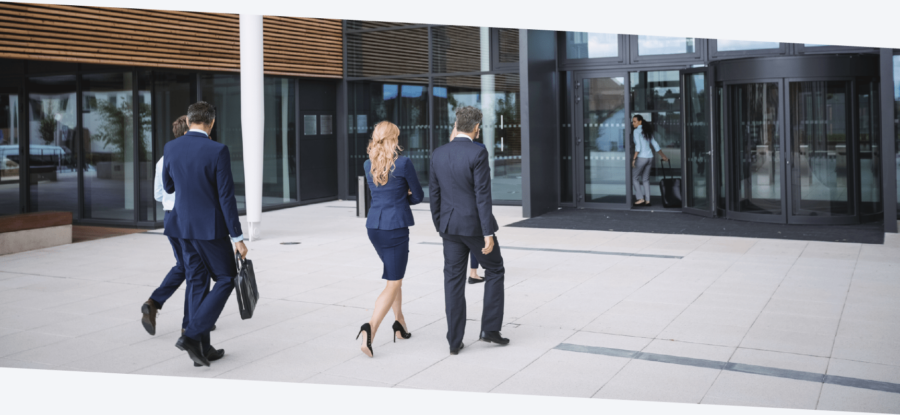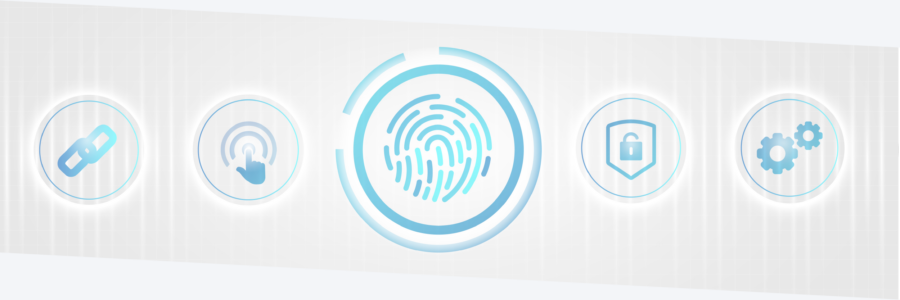Biometric technology offers both greater security and greater convenience for users. Integrating biometric solutions is an efficient and robust enhancement for time and attendance systems.
About time and attendance
Time and attendance systems are primarily used to log and track when employees start and stop working. The employee must register themselves on the system when they begin and end a shift or take a mid-shift break. Automating this process makes it much easier for employers to monitor arrival and departure times. In addition, keeping an eye on absenteeism, lateness, and break times taken is significantly easier.
Development of time and attendance systems
Historically, a wide range of methods have been used to log employees’ working times. The earliest solutions used mechanical clocks and punch cards which staff would have to insert into a machine to physically stamp the time. Later in the 20th Century, electronic systems became more popular, with smartcards the most common choice. Users present the card to a reader, and a computer system logs the arrival or departure time against the user’s profile.

Biometric time and attendance
Time and attendance solutions are an essential part of workforce management. Biometric solutions enhance them in multiple ways.
Fingerprint readers
With fingerprint readers in place of traditional card readers, users log the time by scanning their fingertip. Because every fingerprint is unique, you can be confident that your data is accurate. Buddy-punching (where one employee clocks in/out on behalf of another) is no longer possible. You can’t share your fingerprint with someone else.
Facial recognition
Facial recognition systems such as iface™ offer great convenience for users. All they have to do on entering or exiting a building is stand in front of a camera. The camera uses the unique features and patterns of the user’s face to identify who they are and log their entry/exit time. It’s fast, easy, and secure, as like with fingerprint readers, buddy punching is rendered impossible.
Benefits of biometric time and attendance systems
Biometric technology offers a range of inherent benefits that traditional systems just don’t have. These include:
- Fingerprint and facial recognition systems are highly accurate in identifying employees. They use inherent and unique physiological features of the human body to verify identity. Those features can’t be shared and are extremely difficult to clone or fake. The employer therefore can be confident that whoever logged an entry or exit time was definitely there, physically present at the site, when they did it.
- For employers, an accurate T&A record means better monitoring and better workforce management. People arriving late, leaving early, or taking too much time for breaks can be identified and dealt with quickly and effectively. If salaries are paid based on time worked, an accurate log also means staff are paid fairly.
- Swipe cards and tags can be easily lost, stolen, or damaged. The same is not true for biometric data. Staff don’t need to remember anything at all – provided they simply show up, they have everything they need to clock in. In addition, this means the elimination of ongoing costs to replace lost cards.

Addressing challenges of biometric solutions
Biometric technology comes with a lot of advantages. But as with anything, there are some challenges that a business implementing biometrics must plan for in order to overcome. These include:
- Cost. Biometric systems are more advanced than traditional swipe cards, and as such often come with a higher price tag. Businesses must figure out whether the benefits of better security and convenience outweigh the higher cost.
- Privacy concerns. Lots of people are worried that biometric technology is unsafe for their personal data. CDVI’s biometric solutions come with robust built-in security features that ensure data is protected and cannot be hacked. However, employees may still resist the implementation of this technology. Businesses should prepare for training and education programmes to explain the safety and security of the new system for optimal uptake.
- Technical limitations. All technologies come with limitations. For example, facial recognition cameras often don’t work as effectively in bright sunlight, which might mean they’re unsuitable for your premises. Luckily, the ievo ultimate™ fingerprint reader is suitable for indoor and outdoor use, and even works effectively through levels of water, dirt, and dust.
Integrating and implementing biometric time & attendance
The ievo fingerprint and facial recognition readers are a third-party solution. That means they need to be integrated into a separate time and attendance platform in order to work. We’ve made this as easy as possible with the isync software.
isync acts as a mid-point between the ievo biometrics software and the third-party time and attendance system. By reducing the amount of custom integration required, isync makes it faster, easier, and smoother to implement ievo biometric solutions.
Next steps: book a demo
We’d love to show you what ievo biometrics can do with time and attendance systems. For more information, book a demo with our in-house biometrics expert.
